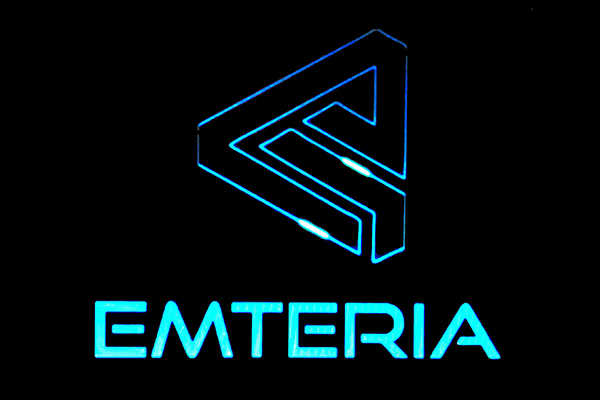When it comes to embedded AI systems, picking the right operating system (OS) is key. Yocto and Ubuntu are top choices, each offering unique benefits for developers and engineers. But how do you know which one suits your project best? Let’s explore these two OS options, examining their features, benefits, and ideal use cases. By the end of this article, you’ll have a clear understanding of whether Yocto or Ubuntu is the better fit for your embedded AI needs.

What is Yocto?
Yocto isn’t an operating system per se but a project that allows you to create custom Linux-based systems. It’s like a build-your-own-adventure for embedded Linux. Yocto provides a flexible set of tools to build an OS tailored precisely to your hardware and project requirements. Ideal for developers who need high customization and control, Yocto is all about building an OS from the ground up.
Key Features of Yocto
- Highly customizable: Create a lightweight and optimized OS for specific hardware.
- Layer-based architecture: Easy to add or remove features.
- Strong focus on embedded systems: Designed to work on limited resources.
What is Ubuntu?
Ubuntu, on the other hand, is a full-fledged Linux distribution. Known for its user-friendliness and robust community support, Ubuntu is a go-to for many developers. It comes in various flavors, including Ubuntu Core, which is specifically designed for IoT and embedded systems. Ubuntu offers a more out-of-the-box experience compared to Yocto, making it easier for beginners and those who need a quick setup.
Key Features of Ubuntu
- User-friendly: Known for its ease of use and extensive documentation.
- Rich ecosystem: Extensive repository of pre-built packages and applications.
- Community support: Large and active community offering support and updates.

Why Consider Embedded AI?
Embedded AI involves integrating artificial intelligence capabilities directly into devices. This means AI algorithms run on the device itself rather than relying on cloud processing. Applications range from smart cameras and home automation to industrial robots and medical devices. The OS you choose can significantly impact the efficiency, performance, and scalability of your embedded AI solutions.
Benefits of Embedded AI
- Reduced latency: Immediate processing without the need for internet connectivity.
- Enhanced privacy: Data is processed locally, minimizing security risks.
- Energy efficiency: Optimized for power-constrained environments.
Yocto vs. Ubuntu: What’s the Difference?
When selecting an operating system for your embedded AI project, understanding the core differences between Yocto and Ubuntu is crucial. These two platforms cater to different needs and use cases, and choosing the right one can significantly impact the efficiency and success of your project. Here, we compare Yocto and Ubuntu in terms of customization, performance, community support, and development complexity to help you make an informed decision.
Customization
- Yocto: Offers unparalleled customization, allowing developers to tailor the OS to the exact specifications of the hardware. This makes it ideal for resource-constrained devices where every byte and clock cycle matters.
- Ubuntu: Provides a more general-purpose OS with a standard set of features. While Ubuntu Core is lighter than the full desktop version, it still includes many components that might be unnecessary for specific embedded applications.
Performance
- Yocto: Typically yields better performance for embedded systems due to its minimalistic and tailored nature. Developers can strip down the OS to only the necessary components, resulting in faster boot times and lower memory usage.
- Ubuntu: While still capable of good performance, especially in its Core variant, it may not match the fine-tuned efficiency of a Yocto-built system for highly specific applications.
Community and Support
- Yocto: Has a strong but more specialized community. The support and documentation are excellent but may require a steeper learning curve due to the complexity of building custom distributions.
- Ubuntu: Boasts one of the largest and most active Linux communities. The extensive documentation and support forums make it easier for beginners and provide quick solutions to common issues.
Development and Maintenance
- Yocto: Development involves more complexity and a steeper learning curve. Maintenance is also more involved, as updates and patches need to be manually integrated into the custom build.
- Ubuntu: Easier to develop and maintain due to its standard packages and automated update mechanisms. Canonical provides regular updates and long-term support versions, simplifying the maintenance process.
Comparison Table: Yocto vs. Ubuntu
| Feature | Yocto | Ubuntu |
| Customization | High | Medium |
| Performance | High (tailored for specific hardware) | Moderate to High (general-purpose) |
| Community Support | Specialized, smaller | Large, extensive |
| Development Complexity | High | Low to Medium |
| Maintenance | Manual updates | Automated updates |
| Documentation | Comprehensive but technical | Extensive and user-friendly |
| Use Case | Highly specific embedded systems | General-purpose embedded and IoT |
Which OS Offers Better Performance?
Performance depends on the specific requirements of your embedded AI project:
- Yocto: Generally offers better performance for tailored applications. By customizing the OS to include only necessary components, Yocto can significantly reduce the footprint and optimize resource usage, which is crucial for performance-critical and power-constrained devices.
- Ubuntu: While not as lightweight as a Yocto build, Ubuntu Core is designed for IoT and embedded systems and can provide sufficient performance for less resource-constrained devices. It offers a balance between performance and ease of use.
How Important is Community Support?
Community support is vital for troubleshooting, learning, and keeping the OS up-to-date. For Yocto, although the community is smaller, it is highly knowledgeable and focused on embedded systems. This specialized support can be invaluable for complex projects where specific, expert advice is often needed. The depth of knowledge within the Yocto community ensures that developers can get precise guidance tailored to the intricacies of embedded systems.
In contrast, Ubuntu boasts a large and diverse community that provides extensive resources, tutorials, and quick help for common issues. This broad support network makes it easier for beginners and those who prefer a more straightforward development process. The abundance of readily available information and the active community involvement help streamline problem-solving and accelerate development, ensuring that even less experienced developers can efficiently work with Ubuntu.

Which OS is Right for Your Embedded AI Project?
Choosing the right OS depends on various factors, including the specific requirements of your embedded AI application. For highly customized, performance-critical applications, Yocto is the preferred choice. Its ability to tailor the OS to specific hardware and application needs makes it ideal for devices with strict performance and resource constraints. By allowing developers to include only the necessary components, Yocto ensures that the OS is lightweight and optimized, which is crucial for maximizing efficiency and performance in resource-limited environments.
On the other hand, Ubuntu is more suitable for those seeking easier development and maintenance with broad community support. Its extensive documentation, user-friendly interface, and automated update mechanisms simplify the development process and reduce maintenance efforts. This makes Ubuntu a great choice for projects that do not have severe resource constraints and can benefit from the rich ecosystem and robust support infrastructure provided by one of the most popular Linux distributions. Whether you prioritize customization and performance or ease of use and support will guide your decision between Yocto and Ubuntu for your embedded AI project.
Geniatech’s Solutions Supporting Yocto and Ubuntu
When choosing between Yocto and Ubuntu for your embedded AI projects, it’s essential to consider the hardware platforms that can best leverage these operating systems. Geniatech offers a range of products supporting both Yocto and Ubuntu, catering to various embedded AI needs.
Products Supporting Yocto
The SOM-G2L OSM is a versatile System on Module (SoM) that supports Yocto, making it ideal for highly customized embedded AI applications. Its design allows for specific tailoring to hardware requirements, ensuring optimal performance and efficiency.
The XPI-iMX8MM is another excellent choice for Yocto support. It provides the necessary flexibility for developers to create a lightweight, tailored operating system that meets the unique demands of their embedded AI projects.
Products Supporting Ubuntu
The APC3588 is designed to support Ubuntu, offering a user-friendly development experience with extensive community support. It’s suitable for projects that benefit from Ubuntu’s robust ecosystem and easier maintenance.
The APC3568 also supports Ubuntu, providing a balanced solution for embedded AI applications that require moderate to high performance without the need for extensive customization.
By choosing the right Geniatech product, you can ensure that your embedded AI project leverages the full potential of either Yocto or Ubuntu, depending on your specific needs and preferences.
Conclusion
Both Yocto and Ubuntu have their strengths and can be the right choice depending on your project’s specific needs. Yocto offers high customization and performance optimization for specialized embedded AI applications, while Ubuntu provides ease of use, robust community support, and a balance of performance for general-purpose embedded systems.
Assessing your project requirements, including hardware constraints, performance needs, and development resources, will guide you to the OS that best fits your embedded AI project.

